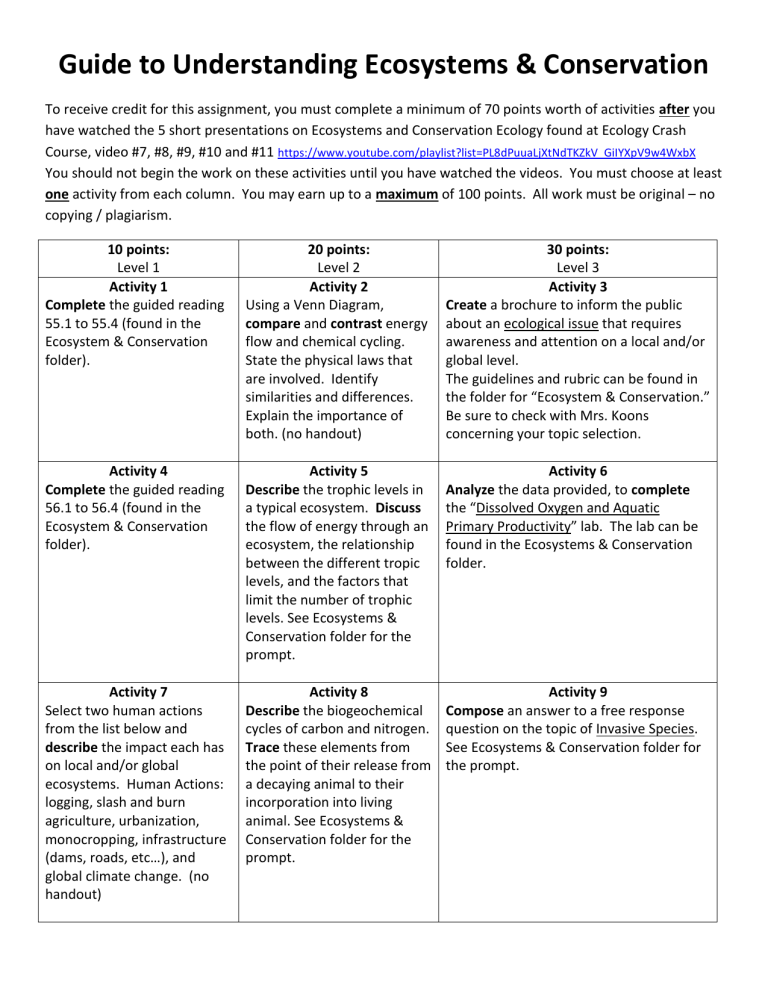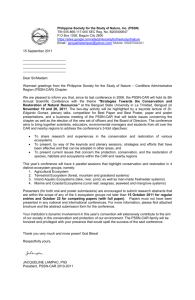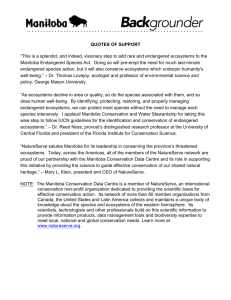Guide to Understanding Ecosystems & Conservation

Guide to Understanding Ecosystems & Conservation
To receive credit for this assignment, you must complete a minimum of 70 points worth of activities after you have watched the 5 short presentations on Ecosystems and Conservation Ecology found at Ecology Crash
Course, video #7, #8, #9, #10 and #11 https://www.youtube.com/playlist?list=PL8dPuuaLjXtNdTKZkV_GiIYXpV9w4WxbX
You should not begin the work on these activities until you have watched the videos. You must choose at least
one activity from each column. You may earn up to a maximum of 100 points. All work must be original – no copying / plagiarism.
10 points:
Level 1
Activity 1
Complete the guided reading
55.1 to 55.4 (found in the
Ecosystem & Conservation folder).
Activity 4
Complete the guided reading
56.1 to 56.4 (found in the
Ecosystem & Conservation folder).
Activity 7
Select two human actions from the list below and
describe the impact each has on local and/or global ecosystems. Human Actions: logging, slash and burn agriculture, urbanization, monocropping, infrastructure
(dams, roads, etc…), and global climate change. (no handout)
20 points:
Level 2
Activity 2
Using a Venn Diagram,
compare and contrast energy flow and chemical cycling.
State the physical laws that are involved. Identify similarities and differences.
Explain the importance of both. (no handout)
Activity 5
Describe the trophic levels in a typical ecosystem. Discuss the flow of energy through an ecosystem, the relationship between the different tropic levels, and the factors that limit the number of trophic levels. See Ecosystems &
Conservation folder for the prompt.
Activity 8
Describe the biogeochemical cycles of carbon and nitrogen.
Trace these elements from the point of their release from a decaying animal to their incorporation into living animal. See Ecosystems &
Conservation folder for the prompt.
30 points:
Level 3
Activity 3
Create a brochure to inform the public about an ecological issue that requires awareness and attention on a local and/or global level.
The guidelines and rubric can be found in the folder for “Ecosystem & Conservation.”
Be sure to check with Mrs. Koons concerning your topic selection.
Activity 6
Analyze the data provided, to complete the “Dissolved Oxygen and Aquatic
Primary Productivity” lab. The lab can be found in the Ecosystems & Conservation folder.
Activity 9
Compose an answer to a free response question on the topic of Invasive Species.
See Ecosystems & Conservation folder for the prompt.











